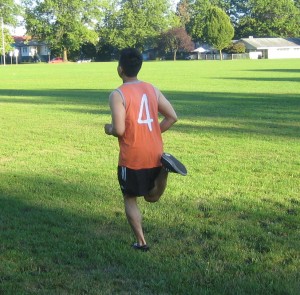Elbow instability is basically slackness in the joint that can instigate the joint to pop, catch or slide out of its position during certain arm movements. It most often occurs as a result of an injury, usually elbow dislocation. It is important to note that this type of injury can damage the ligaments and bones that surround the elbow joint and keep it stable. If you want to learn how to ease the symptoms, read here.
Once the elbow is loose and repeatedly feels as if it is going out of its place, it is considered as recurrent or chronic elbow instability.
What are the types?
- Posterolateral rotatory instability occurs when the elbow glides inside and outside the joint which is caused by damage involving the adjacent collateral ligament complex.
- Varus posteromedial rotatory instability occurs when the elbow glides in and outside of the joint. This is caused damage on the lateral collateral ligament complex aside from the break in the coronoid part of the ulna bone on the interior.
- Valgus instability occurs once the elbow is unstable due to injury of the ulnar collateral ligament.

Potential causes
There are various causes of each types of chronic elbow instability.
- Posterolateral rotatory instability is the most prevalent form of elbow instability that is caused by trauma such as falling on an outstretched hand. It can also develop due to previous surgery or lasting elbow deformity.
- Varus posteromedial rotatory instability is caused by a traumatic event such as a fall.
- Valgus instability is caused by constant stress such as during baseball or basketball. Just like with other forms of instability, it can also occur after a traumatic event.
Symptoms
Chronic elbow instability can lead to catching, locking or clicking of the elbow. The individual will also have a feeling that it might pop out of place. Remember that this feeling typically occurs when pushing off from a chair. Sports that involve overhead movement experience pain on the inside of the elbow while throwing or a loss in the throwing velocity.
Diagnosing chronic elbow instability
After discussing the medical history and symptoms, the doctor will assess the elbow. The elbow is checked if it is tender or if there is deformity. The doctor will ask the individual to move his/her arm in various directions to check for instability or a popping sensation. The imaging tests performed include an X-ray and MRI.
Treatment
The non-surgical treatments are effective in managing symptoms in most cases with valgus instability. Nevertheless, an active athlete who sustained full tearing of the ulnar collateral ligament would require surgery to restore full functionality.
In some cases of posterolateral rotatory, it can improve with non-surgical treatment, but surgery might be required in cases where there is chronic stress on the lateral collateral ligament.
As for varus posteromedial instability, it requires surgery to repair the damage bone and ligament. If not treated, the injury can progress to continued instability and development of early arthritis of the elbow joint.
